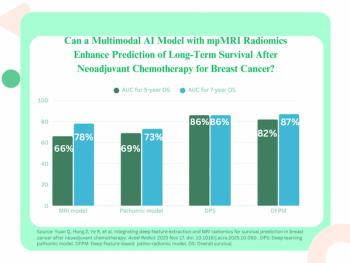
Diffusion tensor imaging may detect early impairment from mild traumatic brain injury
U.S. soldiers returning from Iraq with mild traumatic brain injuries may benefit from preliminary research suggesting that diffusion tensor imaging can identify patients most likely to face long-term cognitive and behavior problems.
U.S. soldiers returning from Iraq with mild traumatic brain injuries may benefit from preliminary research suggesting that diffusion tensor imaging can identify patients most likely to face long-term cognitive and behavior problems.
Mild traumatic brain injury is an important health concern for returning war veterans. An unpublished
A study of 2525 soldiers by Dr. Charles W. Hoge, director of Walter Reed's division of psychiatry and neuroscience, established a link between cases involving the loss of consciousness and post-traumatic stress disorder. The inquiry, published in The New England Journal of Medicine (2008;358:453-463), determined that nearly 44% of these soldiers met the criteria for PTSD, compared with about 9% of returning veterans with no injury.
Mild traumatic brain injury affects an estimated 1.1 million in the U.S. annually, according to Dr. Michael Lipton, an associate professor of radiology, psychiatry, and behavioral science at Albert Einstein College of Medicine and Montefiore Medical Center in New York City. Up to 30% of these cases involve permanent impairment, including worsening memory, attention span, and executive function, which refers to the cognitive ability to plan, organize, and strategize. About 20% of these patients do not return to work.
Functional results from DTI, performed on clinical 3T MR scanners, may lead to better treatment choices for veterans and civilians. A study presented by Lipton and colleagues at the 2007 RSNA meeting determined that DTI uncovers evidence of cerebral injuries among mTBI patients that is missed with anatomic MRI.
The Einstein group performed DTI-MRI on 11 mTBI patients soon after their injuries and again three months later. Potential candidates were identified after arriving in the hospital emergency room. Their injuries stemmed from car crashes, falls, criminal assaults, and other common sources of trauma.
Anatomic MRI was normal, but DTI revealed changes in fractional anisotropy, a measure of the intactness of the microscopic structure of the white matter. By comparing baseline and three-month scans, Lipton found that FA rose in seven patients (63.6%) and fell in four others (36.4%).
Results from standardized neuropsychological tests performed three months after injury correlated with the DTI findings. The four patients with declining executive function, memory, and attention span also exhibited a depressed FA p<0.001). Patients with increased FA showed improvement on neuropsychological tests, suggesting that they were recovering, though more follow-up is needed to be sure about their ultimate disposition.
"We actually correlated the changes in the brain with the changes in patients' functional measures," Lipton said. "If we can identify the population that is going to be at risk for future decline, there might be a window of opportunity where we can treat these people before they get the full-blown deficits related to brain injury."
Though this study focused on civilians, Lipton sees tremendous potential applications for returning soldiers.
"If our findings pan out, you could triage soldiers who were exposed to a blast injury to determine whether they should be put into an aggressive treatment program immediately," he said.
For more information for the Diagnostic Imaging archives:
Newsletter
Stay at the forefront of radiology with the Diagnostic Imaging newsletter, delivering the latest news, clinical insights, and imaging advancements for today’s radiologists.




























